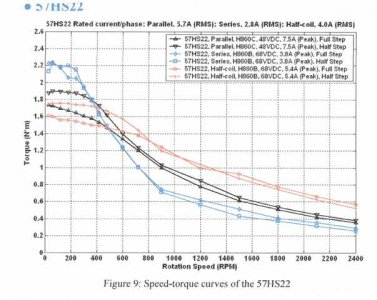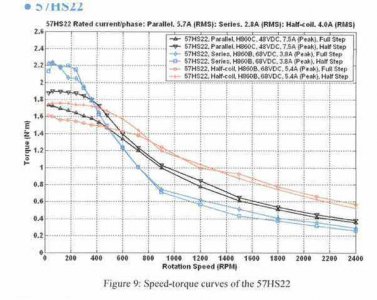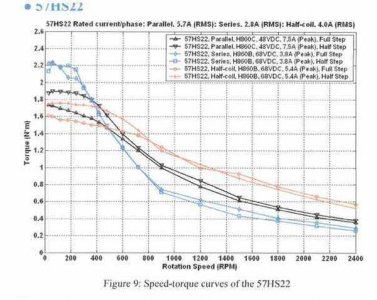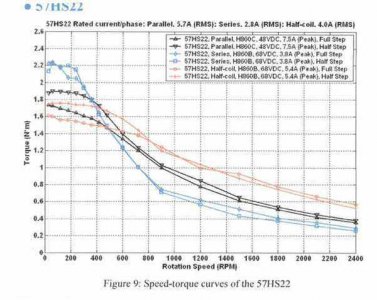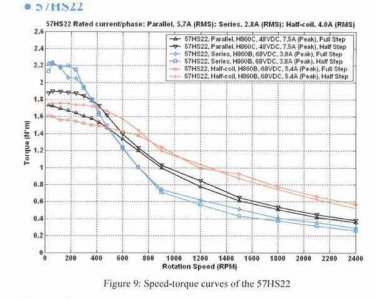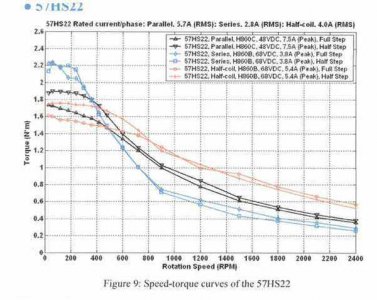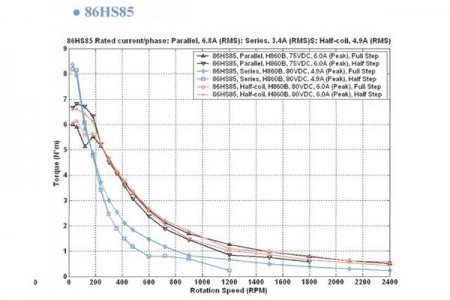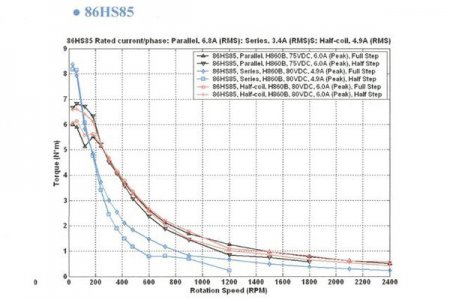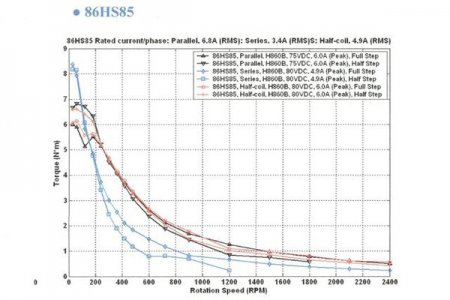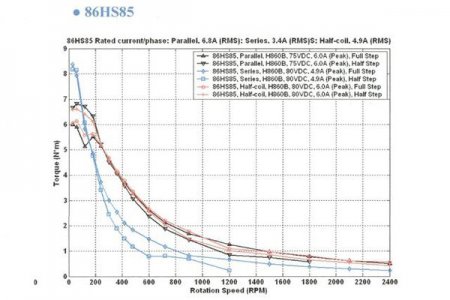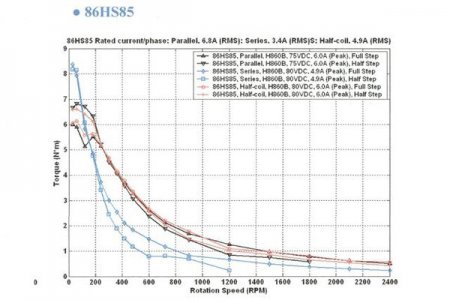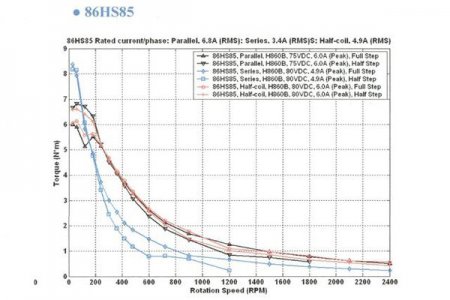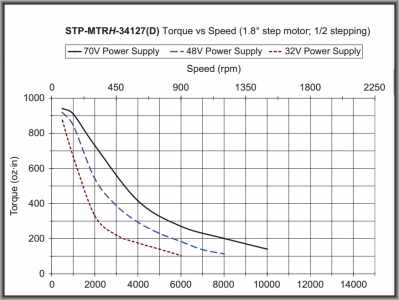The link works for me, but here is the URL again.
www.leadshine.com/productdetail.aspx?type=products&category=stepper-products&producttype=2-phase-stepper-motors&series=57HS&model=57HS22
And here's the graph.
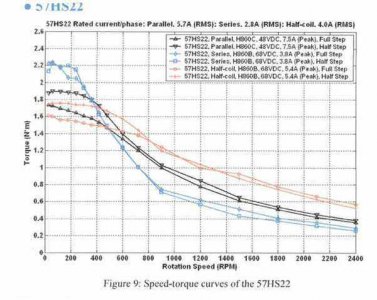
The curve is for a Leadshine 57HS22, with a rated holding torque of 311 Oz-in. (2.2 Nm) - most importantly, the body of the motor is 81mm long.
For any frame size stepper, in general, the longer the motor the greater the holding torque, and the higher the inductance - so the torque drops off sooner as speed increases
In my case, 1000RPM is close to 200ipm if the motor is direct coupled.
But the curve shows the
maximum torque that the motor can put out. And generally with steppers, you want to design/calculate at 40% of that value. This motor produces about .66 Nm max at 1000 rpm (for the blue line - series connection) so about 27 watts of useful power. And the blue line is darn near hyperbolic from 250 rpm out, so basically "constant power".
Jim D. - I've never used a brushed DC servo, but with AC servos the rated torque is what they can pull to rated rpm with 100% duty cycle, then are close to constant hp to maximum speed. Below rated rpm, they have between 2 and 3 times rated torque available for accelerations and other transients - and then being closed loop, it really doesn't matter if they lag a little bit.
